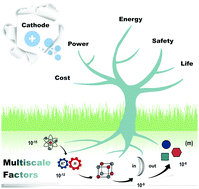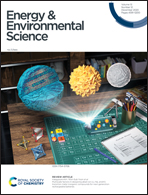Multiscale factors in designing alkali-ion (Li, Na, and K) transition metal inorganic compounds for next-generation rechargeable batteries
Abstract
The demand for ‘more energy and less carbon’ is one of the most important challenges facing humanity. Exploring not only more efficient renewable energy systems, but also advanced energy conversion and storage materials is an essential requisite to achieve the task. Since the emergence of alkali-ion rechargeable batteries, the development of cathode materials has been considered as a key factor that improves the overall performance of batteries. In this respect, understanding the underlying science of the factors affecting the properties and performance of cathode materials and how to ameliorate them have made remarkable progress. There have been several reports about factors ranging from the nano- to the micrometer scale, and now it is time to build an infrastructure to design advanced cathode materials with a selective and comprehensive perspective on those factors. In this Review article, we discuss the key factors contributing to the properties and performance of cathode materials with a comprehensive perspective on various alkali-ion transition metal compounds. It covers a wide scope of factors from atomic to microscopic levels as follows: atomic, electronic, crystal and particle structures.

- This article is part of the themed collection: Energy & Environmental Science Cover Art


 Please wait while we load your content...
Please wait while we load your content...